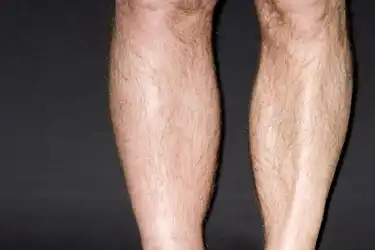It may come on suddenly or gradually. The knees are especially prone to pain from swelling because there is not a lot of soft tissue near the knee.
 Visual Guide To Deep Vein Thrombosis
Visual Guide To Deep Vein Thrombosis
Theyre usually purple or blue in color occur right beneath your skin and typically affect your legs and feet.

Vein pain behind knee. The PCL can also be injured from a car accident when a bent knee is forcefully hit as on a dashboard. Injury at this location will. Cartilage in the knee can tear easily causing pain if a person suddenly pivots and stops.
The knee may look swollen or misshapen. Deep vein thrombosis A deep vein thrombosis DVT is a blood clot that develops in a vein. When a blood clot forms in this vein doctors refer to it as popliteal vein thrombosis.
The knee pa. The presence of dilated veins or skin discoloration suggests venous disease but vein problems can produce symptoms before enlarged veins are detected on the skin. The most common tendon behind knee pain is the biceps femoris tendon and its commonly injured during activities like kick boxing downhill running and sprinting.
Endovenous laser ablation EVLT. This allows blood to move around and past the aneurysm. You may be unable to bend the knee or your knee may pop.
They most often occur in the large veins of the thigh or calf. Pain from venous insufficiency can be felt around the knee and down into the calf and is often associated with a sense of muscular fatigue heaviness or leg swelling. It often feels like there is a squashy orange behind the knee which can be really painful.
Varicose veins typically affect veins in the legs so many of the symptoms associated with varicose veins occur in the legs including around your knees. Another type of injury that can cause pain and swelling behind the knee is tearing cartilage tissue in your knee. Varicose veins are enlarged veins with a rope-like appearance.
The best form of treatment for an aneurysm behind the knee is surgery. Deep vein thrombosis DVT is a blood clot that forms in one of the bodys deep veins found in the lower leg. Doctors will create a surgical bypass or new pathway for blood to flow.
Benjamin Wedro on MedicineNet knee cartilage meniscus tears are common among sports people. The team of experienced vein experts at Carolina Vein Specialists currently offers the following vein treatments. Once the veins behind your knees have been examined your vein specialist may offer one of several minimally invasive treatment techniques depending on the severity of your condition.
Symptoms include swelling and pain in the popliteal fossa -- the space behind the knee. If the discomfort and swelling is in the area behind the knee it may be a popliteal vein thrombosis. The popliteal vein runs behind the knee and transports blood back up to the heart.
Swelling behind the knee is most commonly caused by a Bakers Cyst. Your throat pain could be from seasonal allergies. Excess fluid in the knee joint usually from an injury or knee arthritis leaks out of the back of the joint.
Symptoms of pain behind the knee Varying types of pain. Knee pain is from degenerative disease and vericose veins. Blood clots can form in the popliteal vein that is found in the back of the knee.
Up to 23 percent of. This fluid fills the semimembranosus bursa and causing swelling behind the knee. Leg swelling is often associated with venous insufficiency but also can be.
The pain can be sharp dull or burning. The bypass may be made in a certain part of the veins or through a man-made tube. Dislocations of the knee though uncommon run the risk of damaging.
Your doctor will do a physical exam. If you have vein problems. The reduced blood flow and tissue damage can cause pain and persistent swelling of the leg a condition known as edema.
